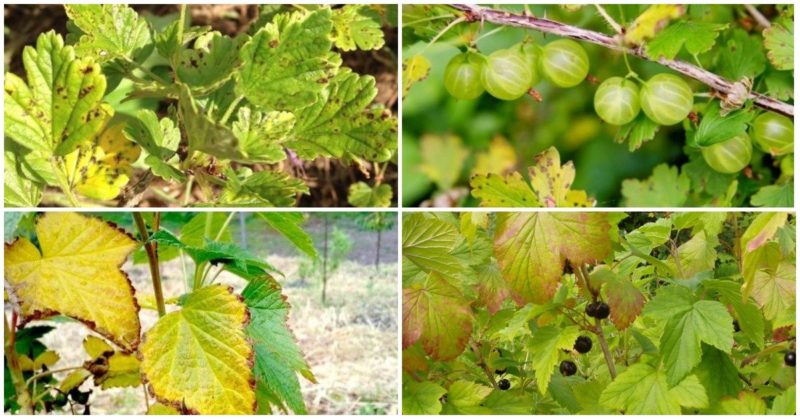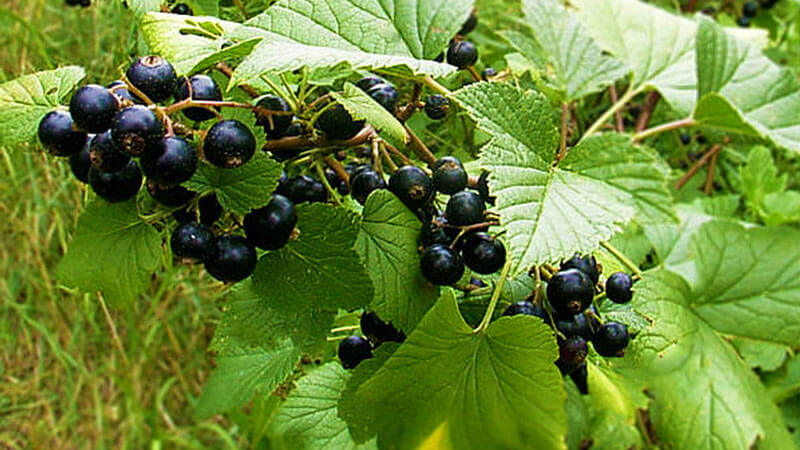Crop rotation rules in the garden: what can be planted next to black currants
Crop rotation is an important component of proper cultivation of crops. It is necessary not only for annuals, but also for shrubs and trees. Compliance with the recommendations for the selection of previous and neighboring crops improves yields. We will tell you what you can plant next to black currants.
The content of the article
Crop rotation rules for growing black currant

For each plant species, there are characteristic diseases and dangerous pests. Nutrient requirements also vary. All these factors are taken into account when drawing up recommendations for crop rotation.
Basic rules prohibit:
- plant after plants of the same family;
- grow after plants that have common pests;
- use a site where crops that are demanding for the same microelements grew.
The best predecessors saturate the soil with organic matter, improve the quality of the soil.
Important! You can return the currants to the area where they grew in 6 years.
Why is it important to comply with them
During growth, plants absorb trace elements from the soil. The nutritional value of the soil is replenished by the introduction of fertilizers. But if the same substances are taken out, while others remain intact, an imbalance arises that interferes with the normal development of plants.
Insect larvae and pathogens accumulate in the soil, creating unfavorable conditions for growing crops.
Impact on growth and yield
Crop rotation reduces the risk of plant infection, which results in better yields. Adequate amounts of nutrients also have a positive effect.
What is the best place to plant black currants next

Plant compatibility is determined by the following factors:
- competitiveness;
- the size of the root system;
- the presence of common pathogens.
Competition for sunlight, moisture and nutrients slows down plant development and lowers yields. Low cultures are considered good neighbors.
The spread of roots in the same layer of nutrient soil reduces the amount of trace elements available. It is better to plant plants with a superficial root system next to currants.
Neighbors should not be affected by the same diseases and insects. This rule is especially important in relation to the moth, a dangerous pest.
Strawberry compatibility
The shallow root system of the strawberry will not harm the currant in any way. There are few common pests, so such a neighborhood can be called successful. When planting, it must be borne in mind that strawberries are a sun-loving plant. Currants can shade it.
With honeysuckle

In this case, the possibility of neighborhood depends on the variety of currants and the size honeysuckle... If the currants are higher, you can plant crops nearby. Low-growing varieties of honeysuckle will shade. They have no common diseases.
With raspberries
Not the most successful neighborhood, since raspberries let layering, interfering with the growth of currants. Besides, plants suffer from similar diseases.
With cherry

Unfortunate neighborhood. Cherry will shade currants, and its root shoots will reduce the amount of nutrients in the soil.
With apple tree
The high crown of the apple tree can shade adjacent crops, reducing their yield. An exception is the southern regions. In this case, the apple tree is planted so that its shadow falls on the currant in the middle of the day, protecting the leaves and berries from sunburn.
With vegetables and herbs
Good neighborhood except for high grades tomato and cucumbers. Currants can be used as a bush crop to protect vegetables from pests.
Bad neighborhood for a plant

Intense lighting is very important for black currants. Trees and tall shrubs will oppress her. The root system of the plum spreads horizontally, worsening conditions for the growth of black currants.
Common infectious diseases in neighboring plants threaten to lose a large part of the crop. In especially difficult cases, the death of plants is possible.
Important! Some plants are more attractive to insects than currants. Close proximity to them impairs pollination and reduces yields.
Why you can't plant black and red currants next to each other
All types of currants are affected by the same diseases, so the close proximity of these crops is undesirable. If there is no other option, preventive spraying and insect protection are necessary.
Planting pollinating varieties nearby
Most varieties of currants are self-pollinated, but the presence of a number of pollinating varieties improves yields by up to 20%. When choosing a suitable variety, you need to pay attention to the flowering time. The early ones are not suitable for the later ones, since by the time of flowering the latter already have ovaries.
Best and worst predecessors
Soils after black fallow and plowed green manure are best suited for growing berry crops.
Suitable predecessors of this plant saturate the soil with microelements, fight pests, and do not emit substances toxic to the plant. Currants grow best after:
- sunflower;
- cereals;
- corn.

These plants aerate the soil, creating suitable conditions for growing currants.
The worst predecessors reduce the nutrient content of the soil and contribute to the saturation of the soil with pathogens. For currants, these are:
- gooseberry;
- raspberry.
Gooseberry has many diseases in common with currants, removes nutrients necessary for it from the soil. Raspberries litter the soil with shoots that will have to be dug over several years. If they grow inside the bush, it will be problematic to remove them.
At what distance to plant black currants
To determine the required distance, the characteristics of the variety are taken into account. The height of their branches can vary significantly. Some varieties grow compactly, the shoots are almost vertical. In others, the angle between the branch and the soil does not exceed 30 °. Tall and spreading varieties require more space than compact varieties.
Properly planted plants do not shade each other, and the distance between them should be sufficient for harvesting.
Important! To save space, varieties with high branches are grown on trellises. In this case, the bushes are planted at a distance of 0.5 m.The gap between the trellises is made at least 0.7 m. Low-growing varieties are planted at a distance of 0.5 m. The row spacing is from 1 m. Tall ones are planted at a distance of at least 1 m.
Do I need to plant two bushes side by side
The seedlings planted in the same hole begin to compete with each other for the necessary resources. Too close to the roots creates micronutrient deficiencies. One of the competing shoots will have to be removed. As a result, the yield will not increase, and may even decrease.
It is not worth planting two bushes next to each other, this is an extra waste of planting material.
Reference. An exception can be made for very weak seedlings. If both are accepted, remove the weaker one.
Conclusion
Compliance with crop rotation is the most important factor affecting yield. Careful adherence to its rules and recommendations of gardeners significantly increases the amount of berries harvested.Black currants are no exception. Considering the requirements of crop rotation, the bushes give a rich, high-quality crop.